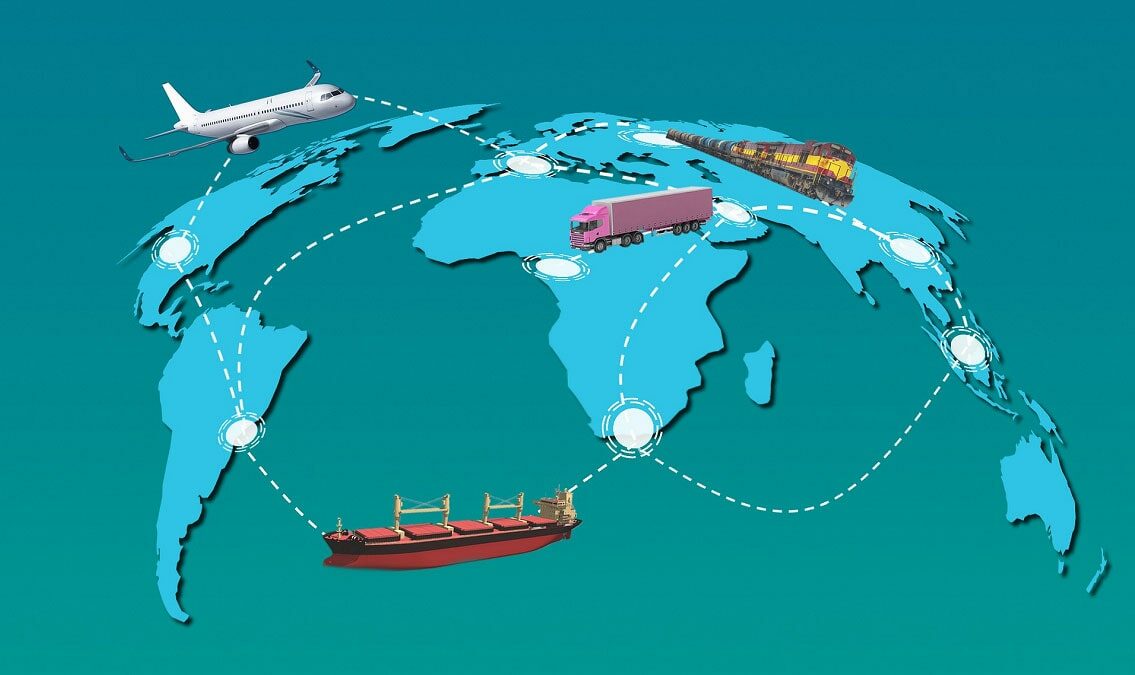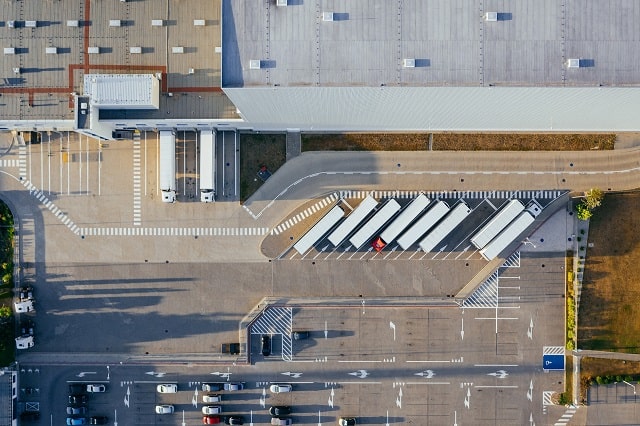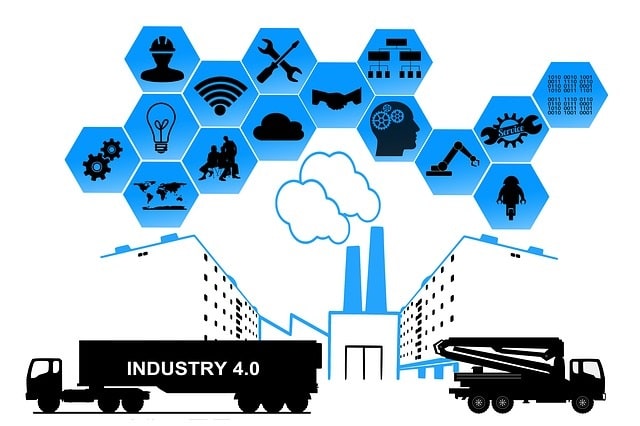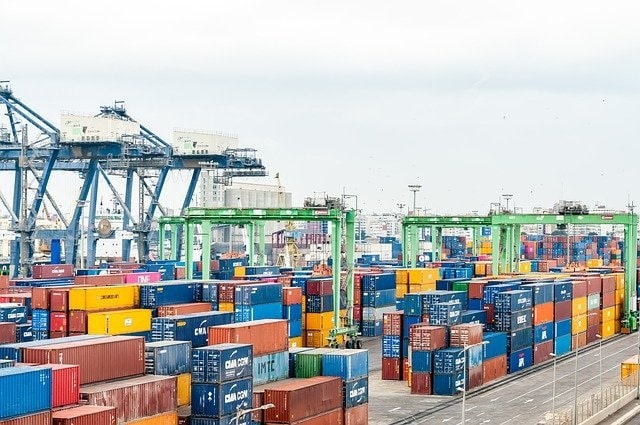What is Logistics Management? Why is It Important?


Logistics management is one of the main components of supply chain management, and it refers to the planning and oversight of the movement of all the raw materials, supplies, and information necessary to create and deliver a product, starting with the acquisition of raw materials through to the delivery of finished products to the end consumer or the final destination.
Given the broad scope of logistics management and the many factors to consider to minimize costs and optimize processes, logistics managers face significant challenges and must be able to manage the finer details while also keeping an eye on the big picture.
Effective logistics management enables companies to earn customer trust and loyalty, increase revenue, and keep costs to a minimum for a healthy bottom line. In this guide, we’ll take a look at the elements of logistics management and how they work together to ensure customer satisfaction and minimize costs

The two primary functions of logistics management are warehouse management and transportation management, but there are many other elements involved.
Essentially, logistics management oversees the process of storing and transporting raw materials, supplies, and finished goods, ensuring that they get where they need to go in a timely manner. That includes everything from selecting transportation vendors to determining the best mode of transportation, managing the flow of information related to transportation and storage, and optimizing the storage of materials and goods to minimize inventory storage costs.
Logistics management is a subset of supply chain management, with supply chain management being larger in scope and encompassing procurement, production, and sales of goods and materials, while logistics focuses on transportation and storage.
Logistics management involves a great deal of decision-making and planning. When things go wrong, due to poor decision-making or external influences (such as sudden market shifts or supply shortages), it affects the entire organization as well as the rest of the supply chain.
Without effective logistics management, customers may wait longer to receive products, or they may not receive orders at all or receive the wrong items. They may receive perished goods as a result of shipping delays, or they may receive products that were damaged during shipping due to improper packaging or handling.
The business also suffers. Unhappy customers may take their business to your competitors, resulting in lost revenue. You may have to purchase more expensive raw materials if your primary supplier is unable to fulfill an order but you don’t have a contract with a suitable backup vendor. Many things can go wrong, most of which ultimately impact the company’s bottom line – and potentially its reputation.
Effective logistics management, on the other hand, has the opposite effect: boosting customer satisfaction, increasing revenue, reducing costs, and contributing to a well-functioning supply chain.

There are four main types of logistics based on the items being transported, the direction the goods and materials are flowing, and whether the process is managed in-house or by a third-party service provider. Let’s take a look at the different types of logistics.
Inbound logistics relates to the incoming transportation and storage of raw materials, components, and other supplies needed to manufacture a finished product. It’s a crucial component of overall logistics management, as failure to acquire the necessary materials can delay manufacturing operations, ultimately resulting in backorders and unhappy customers. Inbound logistics processes must be coordinated closely with procurement to ensure the availability of transportation and storage needed to move and store materials as they arrive.
Outbound logistics is essentially the opposite of inbound logistics. It involves the storage of finished goods and the transportation of those goods to interim or final destinations such as distribution centers, retailers, and end consumers.
Reverse logistics focuses on return processes when end consumers receive products that don’t meet their requirements or were damaged during delivery. It deals with the transportation and storage of finished goods, rather than raw materials. Rather than transportation from a seller, manufacturer, or storage facility to an end consumer, reverse logistics involves the transportation of finished goods from the end consumer to the seller or manufacturer. Reverse logistics may also include processes such as inspection of returned items, refurbishing, and redistribution, as well as the disposal of items that can’t be repaired or resold.
When a company outsources transportation and/or storage processes, it outsources those processes to a third-party logistics provider, or 3PL. Some 3PLs only offer transportation, while others offer transportation, warehouse storage, inventory management, shipping and receiving, and other processes for complete logistics management. Third-party logistics is ideal for companies that don’t have the resources to build and manage in-house logistics processes, and it enables companies to focus on their core capabilities (manufacturing, marketing, sales, etc.) while leaving complex logistics processes in the hands of an experienced 3PL provider.
Logistics management plays an integral role in maintaining supply chain efficiency, ensuring customer satisfaction, and minimizing costs for a business. With many elements involved, logistics management is what brings together a variety of functions such as:
The scope of logistics management often varies, with some companies separating functions such as assembly and packaging or warehousing and inventory management. Logistics management also must integrate with other functions such as production management, marketing, information technology, and accounting.

Let’s take a closer look at some of the core logistics processes and what’s involved in effectively managing them.
Logistics management often encompasses strategic sourcing, or the process of finding, contracting, and managing relationships with the most reliable and low-cost suppliers of raw materials and other supplies needed for manufacturing. Strategic sourcing may be impacted by supply shortages or backorders, increased shipping costs due to distance or fuel costs, regulations, and whether the supplier prioritizes relationships with competitors or other customers (meaning they fill those orders first before lower-priority customer orders).
To manage it effectively, logistics managers must identify the best suppliers, negotiate contracts, manage relationships, and manage and mitigate risk.
Warehousing is an important component of logistics management in both inbound and outbound operations. Raw materials and supplies arriving to meet manufacturing needs must be stored until they’re used, while finished goods require storage until they’re transported to the final destination.
Encompassing both short-term and long-term storage, effective warehouse logistics management involves several processes, from monitoring warehouse storage space availability to optimizing the warehouse layout and space utilization and meeting special storage requirements (such as cold storage or storage facilities close to transportation).
For example, logistics managers may be involved in optimizing the warehouse layout so that fast-moving items are stored closer to the packing area, shipping area, or docks or other exit points. Slow-moving items, on the other hand, are stored in the harder-to-access areas of the warehouse as they won’t need to be accessed as frequently.
These processes are streamlined with the use of warehouse label solutions, such as warehouse rack labels, container, pallet, and tote and tray barcode labels, warehouse floor labels, and warehouse signs integrated with a warehouse management system (WMS). Warehouse barcoding using labels, asset tags, and signs provide visual cues to help manage the flow of foot and equipment traffic to reduce aisle congestion.
They also help to improve efficiency and accuracy by enabling associates to quickly locate the proper storage location for an item for picking and putaway.
Inventory management is also a key component of logistics management, and it’s vital for ensuring that the right items are available in the right locations when they’re needed – this includes raw materials, supplies, and finished goods. Effective inventory management enables companies to meet demand during seasonal peaks or shifts in market trends, while at the same time ensuring that there’s not an abundance of excess inventory that will take up valuable storage space during periods of low demand.
The longer a business has to store products, the higher the overhead – and the less storage space available for items currently in demand. The goal is to have fast inventory turns without stockouts or backorders.
Like warehouse management, inventory management also benefits from asset tags and barcode labels. Inventory control tags and labels integrate with inventory management software and other solutions such as ERP systems to improve the efficiency and accuracy of processes such as inventory tracking, inventory counts, inventory control, asset identification, and more.
For a deeper dive into inventory tags, read The Expert’s Guide to Inventory Tags with uses, types, tips and more.
Demand forecasting is one of the most crucial logistics management processes, as it provides the data and insights necessary for effective inventory management and warehouse optimization. Using demand forecasting, logistics managers can predict the volume of materials or products needed to meet anticipated demand without acquiring too much inventory that will require long-term storage. It involves analyzing data from a variety of sources, including:
There are different approaches to demand forecasting, and there are also software solutions capable of sophisticated analysis that allow logistics managers to model various scenarios to gain a more complete picture of potential demand.

Logistics managers rely on a variety of technology and software solutions to automate processes, analyze data, and manage the flow of goods and information. Some of these types of software have overlapping features, meaning that the typical logistics management technology stack doesn’t include every type of software listed below.
Instead, logistics managers choose technology and software solutions that best meet their company’s needs and integrate with other existing or required software solutions. There are many types of software that may be used in logistics management, including:
A complex field, logistics management is a practice that brings various functions and moving parts together to ensure the seamless flow of materials, supplies, finished goods, and information throughout an organization from end to end. With a thorough understanding of logistics management processes and the right technology, logistics managers can see the big picture while effectively managing all the granular details.
Logistics management involves overseeing and coordinating all the activities involved in acquiring, producing, and distributing goods and services. Its primary function is to plan, implement, and control the efficient and effective forward and reverse flow and storage of goods, services, and related information from the point of origin to the point of consumption to meet customer requirements.
The key duties of a logistics manager include:
The primary function of logistics management is to ensure the efficient and effective flow and storage of goods, services, and related information from the point of origin to the point of consumption while meeting customer requirements. It involves managing the entire supply chain, including procurement, production, distribution, and after-sales service.
Basic logistics management involves planning, implementing, and controlling the forward and reverse flow and storage of goods, services, and related information between the point of origin and the point of consumption. It encompasses activities like demand forecasting, inventory management, order processing, transportation, warehousing, material handling, packaging, and customer service.
The core objective of basic logistics management is to deliver the right product or service, in the right quantity and condition, to the right place, at the right time, for the right customer, and at the right cost.
Our sales engineers are experts in automatic asset tracking, tagging and identification,a nd can answer all your questions. Get in touch now.
Lets Talk ›Enter your information and get a free checklist of the top questions to answer and tips to plan a successful asset tagging project for any asset management or tracking system implementation.